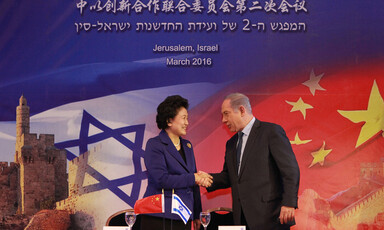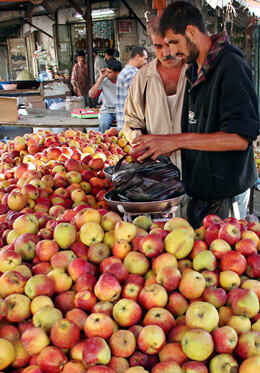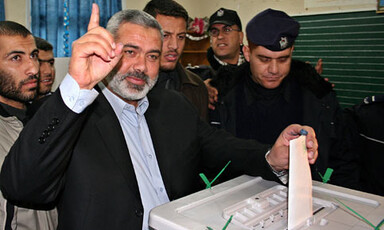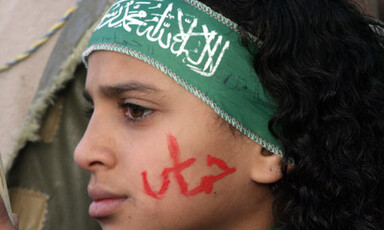
Why does Palestinian Authority support Chinese colonialism?
9 September 2016
The PA was wrong to defend Beijing’s territorial claim to the South China Sea. Read more about Why does Palestinian Authority support Chinese colonialism?

9 September 2016
The PA was wrong to defend Beijing’s territorial claim to the South China Sea. Read more about Why does Palestinian Authority support Chinese colonialism?

Edmonton 12 March 2015
Prime minister’s belligerence leaves little room for moral equivocation. Read more about Would a Netanyahu victory raise the alarm on Israeli apartheid?

Gaza Strip, Palestine 29 January 2007
It is an all too familiar sound. Gunfire and explosions echo accross the night in Gaza City. Yet, this evening, once again the sounds are not caused by fighting between the Israeli military and the Palestinian militants. Instead it is Hamas and elements from Fateh and some of the associated criminal fraternity who are fighting. Tonight all of Gaza is in flames. Every street, every area, is consummed in what can only be described as a civil war between the main two factions here. At eight-thirty we leave a friend’s house to return to the area where I am staying, Tel al Howa in Gaza City. Read more about Hope is a scarce commodity

Jerusalem 25 January 2007
Today I sat in the comfortable air conditioned office of Trocaire’s partner B’Tselem, the Israeli human rights information centre. Meanwhile, out on the ranch — Aine Bhreathnach the Middle East emergency programme officer went on a tour of Jerusalem with B’Tselem staff. On the tour, which illustrates how Israel is using the wall to annex Palestinian land, they witnessed a house demolition taking place. As Aine witnessed it, the facts are this, in her words: “Five families lived in a house in Sur Bahir, a village near Jerusalem which is being annexed to Jerusalem by Israel. On the 22nd of January 2006, their homes were demolished.” Read more about Our house, in the middle of our street

West Bank, Palestine 20 January 2007
Topography here is in constant fluctuation. From one visit to the next a whole area, or just a small street, can look completely different. In Gaza, maybe it has been destroyed or, sometimes, rebuilt. In the West Bank, including East Jerusalem, a flow of ongoing construction manifests itself in the wall, in the illegal settlements and in the construction of the discriminatory road system. Today, while driving through the western edges of the West Bank, we began to understand what the “forbidden roads regime” actually means — through an intricate series of road systems Israelis will travel on one set of roads while Palestinians will travel on roads built underneath them. Read more about The hate that dare not speak its name

Beit Lahiya, Palestine 19 January 2007
Let me take you down, ‘cos we’re going to … Beit Lahiya in the north of the Gaza Strip, to go strawberry picking. As part of Trocaire’s work here we want to make our response to the humanitarian emergency as sustainable as possible. This way we can ensure that people who have had thousands of donums of land demolished can recover in the long term. In the northern area of Gaza strawberries are the main produce. Strawberries like you’ve never eaten before, sweet and juicy. The big ones look like something from a strawberry ad campaign but the small ones are the sweetest. Read more about Strawberry fields forever?

Gaza City, Palestine 18 January 2007
For the past few months the biggest issue for people in Gaza has become the security situation caused by the the clashes between Hamas and some ‘leading lights’ in the decrepit Fateh party. People felt unsafe to leave their home. One friend lives near a hot spot — her house has bullet holes through it. Her children are so afraid that even when no fighting is happening they are crawling from room to room. In the centre of Gaza City, in the square of the Unknown Soldier a movement has sprung up. Partially out of desperation, partially out of a desire to end the violent internal clashes and provide some protection for Palestinian civilians. Read more about This is what democracy looks like

Gaza City 26 January 2006
The cliche of the day was that Wednesday the 25th of January, the second elections of the Palestinian Legislative Council, was a festival of democracy. The Gaza Strip is a dusty stretch of land. But as the day passed and the night wore on we were surprised by the strength of the Hamas showing. Certainly anyone who has ever been to the Gaza Strip and witnessed Israeli human rights violations and the chaos on the streets because of the collapse of law and order is not shocked at a good showing by Hamas. Even more so after yesterday’s elections - now the world awaits the dusty political landscape to settle. Eoin Murray reports, Live from Occupied Palestine, in the Gaza Strip. Read more about Palestinian Elections: Forcing the West to awake to the voices of the people

Gaza City 24 January 2006
A year on and the groaning burden of the Israeli occupation remains in place – a constant feature of the political and geographical landscape. The impact of Israel’s occupation on the election for the 132-member Palestinian Legislative Council on 25 January 2006 remains unclear but certain key factors have to be taken into consideration. The pressures of occupation and poverty are undiminished, but the Palestine election is an opportunity for activists to promote a vision of change, finds Eóin Murray. Read more about Palestinians' time of choice

Gaza, Palestine 22 August 2005
The Israeli political and military establishment didn’t just put a donkey, a goat and a cow into the Palestinian lands they put in the whole zoo. This morning I received an e-mail from a friend in Washington D.C. He expressed his sympathy for the Israeli settlers who he had watched being removed from their homes. It is his birthday today. I thought that rather then e-mail him a moral lesson all the way from the Gaza Strip or tell him the stories of the 30,000 Palestinians who lost their homes during this Intifada I would send him an old Jewish proverb that sums up the situation in Palestine one week after the start of the redeployment. Read more about Disengagement: "A donkey, a goat and a cow"